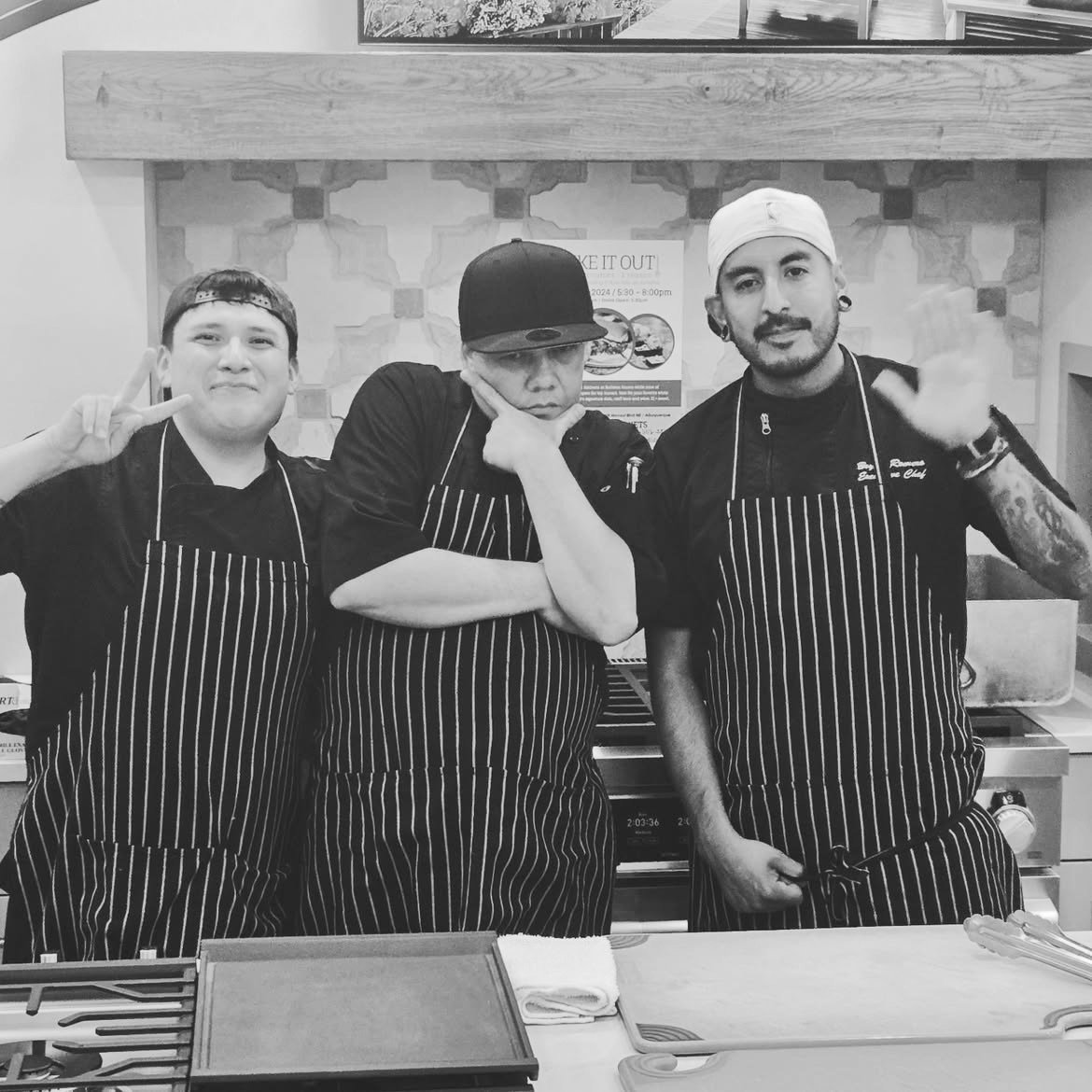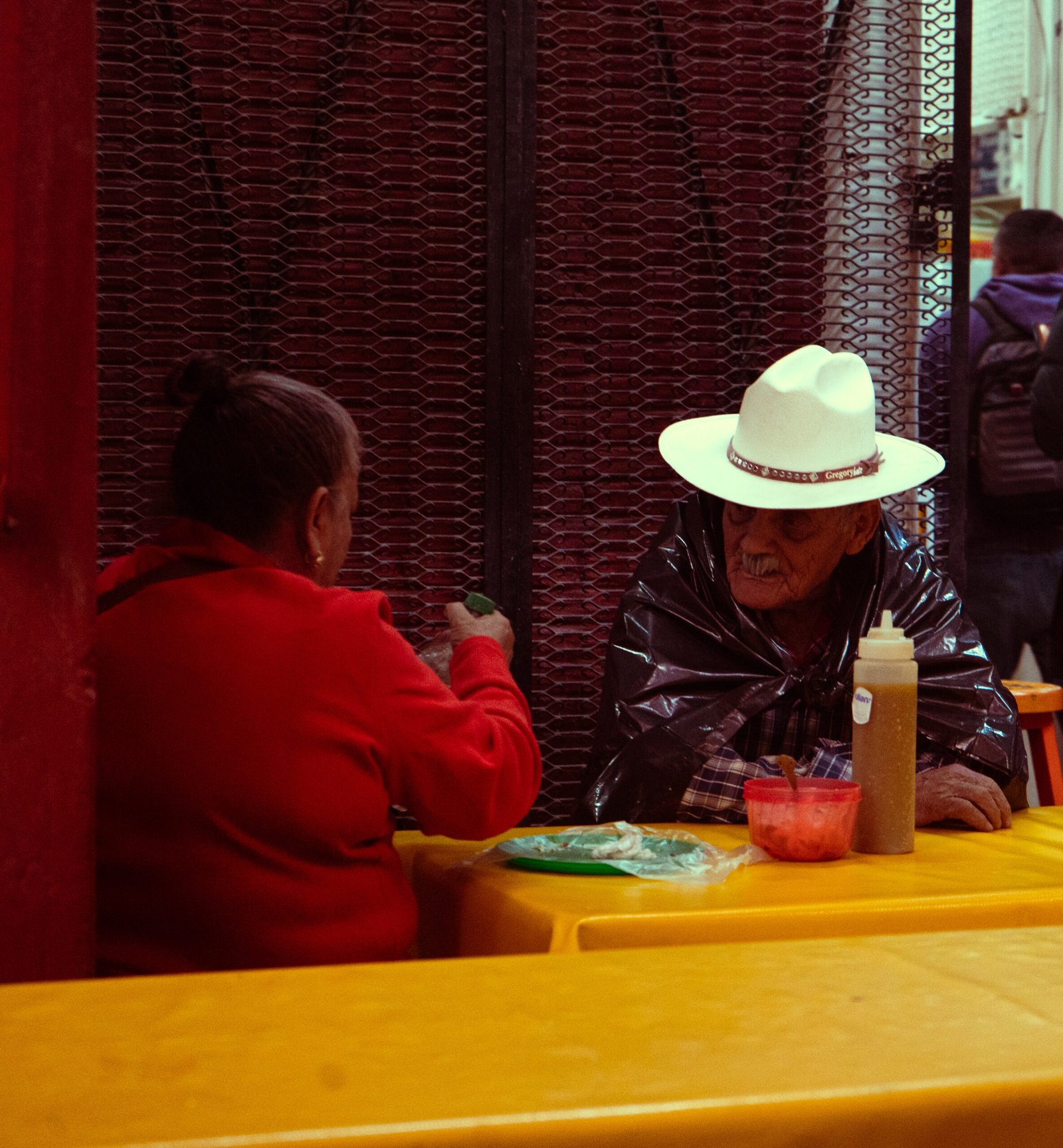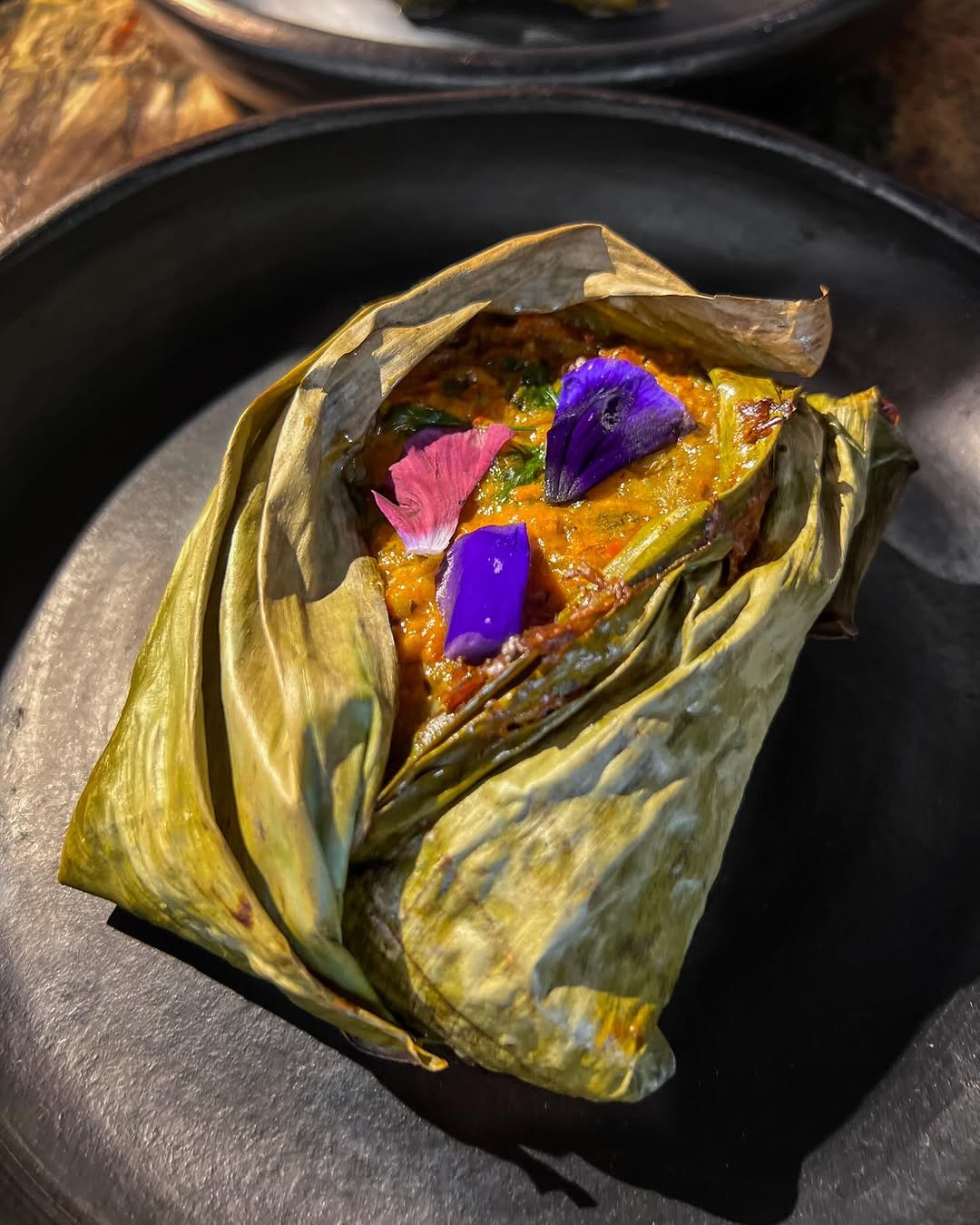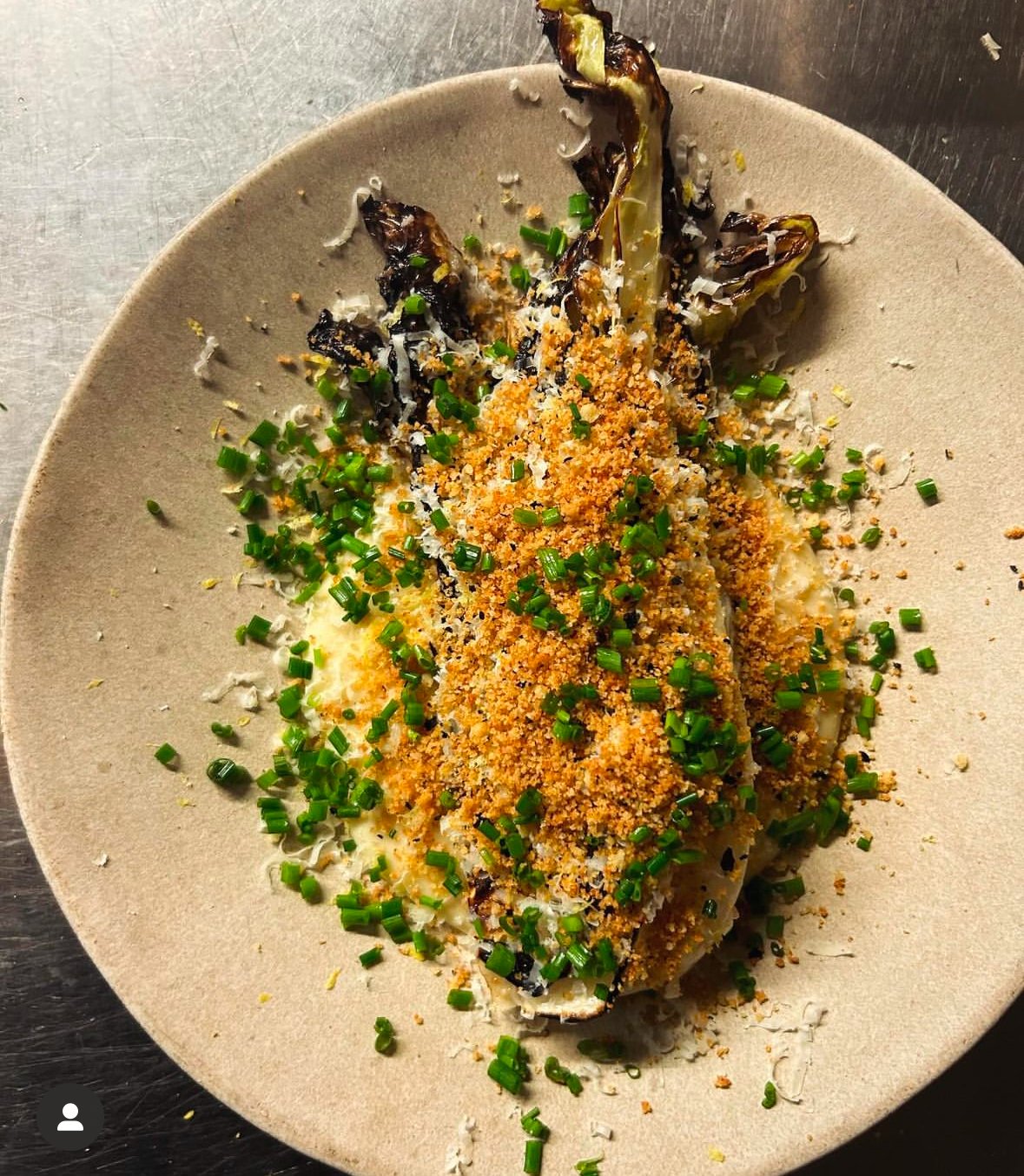A Local Ingredient That Transformed a Chef's Career
Humans Of The Kitchen
A Journey of Tradition and Innovation

María Fernanda Ramos Fernández
Neiva, Huila
I was born in Neiva, Huila, Colombia. Since I was a kid, I’ve been deeply involved in the cooking industry thanks to my parents, who have owned a restaurant for over 30 years. However, despite loving cooking and the joy food brings to the table, I was taking the ‘comfortable route’ by simply working in our family restaurant and contributing to the continued success of my parents’ business plan.
This meant going with the flow, cooking the restaurant’s traditional menu, with no real contribution beyond hard work. But then the pandemic arrived, hitting us hard. Those were challenging times, but they forced us to step out of our comfort zone, marking what I now consider my real creative beginning.
There’s a traditional salty biscuit from my hometown called Bizcocho de Achira, made from sagu flour, fresh cheese, and butter – cheese, and butter – something I’d eaten all my life and always found amazing! I created a cake using Achira powder and Arequipe. We used it as a side business during the pandemic shutdowns, and I was blown away by how people enjoyed it. It took me from ‘survival mode’ to a more business-oriented and creative approach. This cake also opened many doors for me. For example, I sent one to Harry Sasson, a renowned chef and respected member of the Colombian restaurant community. He asked to meet with me to discuss it, leading to an opportunity to spend a few months in his kitchen, learning from him and his team. This was one of the most enriching experiences of my life.
I’ve found inspiration in working with and learning more about our local products, such as quesillo yaguareño (a special fresh cheese from a small town near Neiva), arepas oreja de perro (a soft tortilla made from cornmeal), cholupa (a local fruit), and coffee from the mountains of Huila. I now incorporate these ingredients into recipes I create in our restaurant, and in a gourmet fast seafood brand that I created called Maria Ceviche.
As part of my challenges and learning process I also had the opportunity to spend a few months in Likoké, a restaurant with one Michelin star in France run by Guido Niño Torres, a Colombian chef.
My inspiration comes from the richness of the region I’m from, and I dream that people from other parts of Colombia and the world will get to know more about Huila, its food, and the magical landscape we have.
From Apron Strings to Leadership Rings
Humans Of The Kitchen
Growth, trust, community, and leadership in the heart of the kitchen.
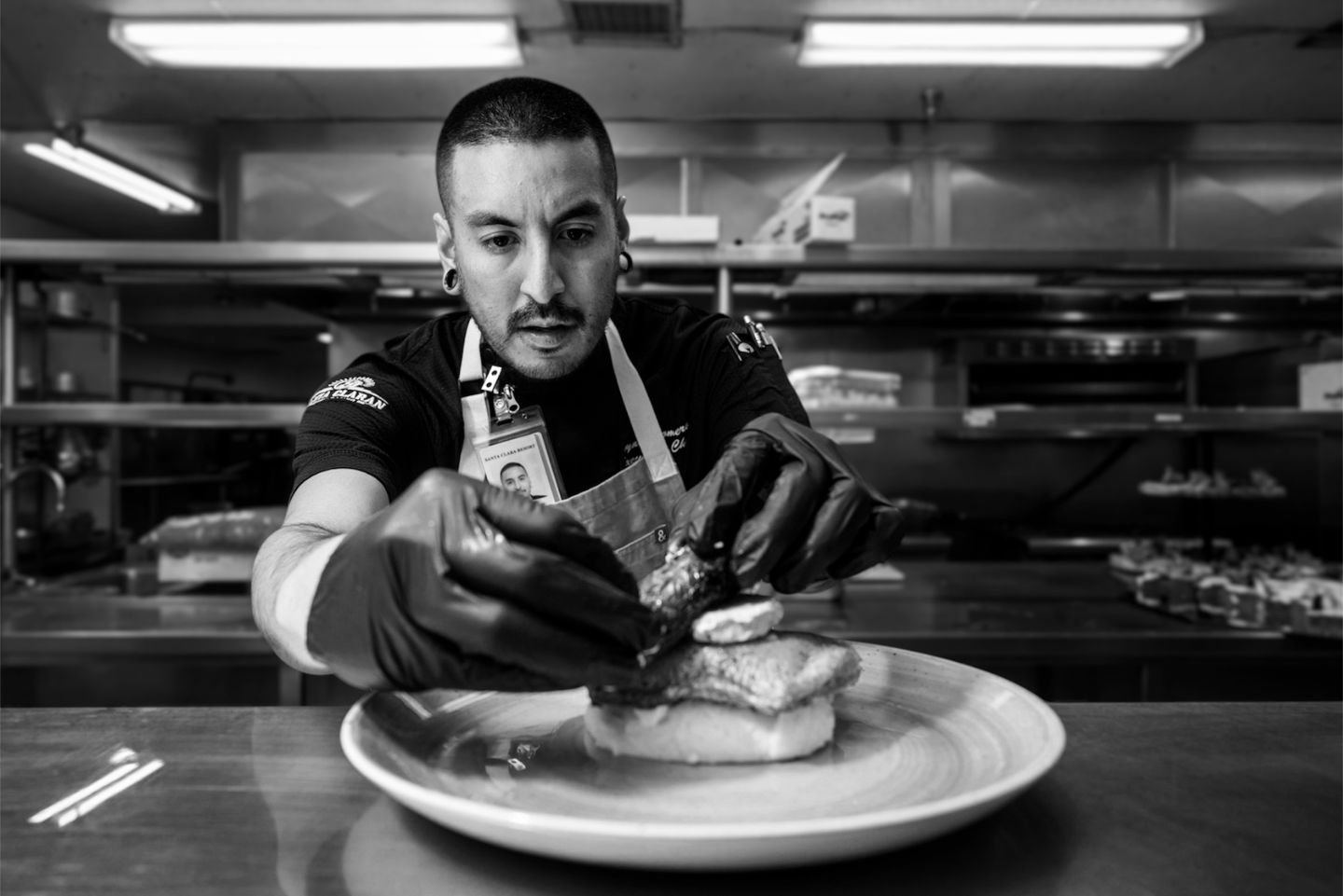
Bryan Romero
Southside, Albuquerque New Mexico
I have always loved art, painting, film, and how stories can be told in color and movement. Cooking has always been in the background. My dad used to print out recipes for me and leave them on the counter for me to follow while he was at work. I’d cook for my family, watching how a simple dish could change the mood in a room. But I never saw it as a career until I put on an apron and walked into a fast-food kitchen.
It wasn’t glamorous but taught me speed, integrity, and survival. That job led to another—a line cook at a casino. It was supposed to be temporary, but something about the heat, the rhythm, the constant motion pulled me in. The casino offered tuition reimbursement if I kept my grades up, so I took the deal. I went to culinary school and got paid back for every cent. Ten years later, I landed my first sous chef position and haven’t looked back since.
I learned this craft in kitchens, books, and through people who gave me a shot. I devour classic cookbooks and modern techniques, always looking for something new. But nothing compares to the community of chefs I’ve found here in Albuquerque. We’re not in competition, we push each other forward. I’ve had mentors who taught me, and now, I pass that on to my own team.
I had my daughter at 20, so I already knew what it meant to be responsible for others. But in the kitchen, leadership took on a different meaning. It’s not just about knowing how to cook, it’s about being the person people turn to for answers, inside and outside of work. That’s what drives me.
One of the moments that shaped me was being trusted to create weekend specials in a restaurant where my chef had just won “Best Chef in the City.” There were press eyes on us and high expectations, but my chef let me take the lead. That moment taught me that hard work gets noticed and that leadership isn’t just about control but trust.
The restaurant industry thrives on passion, yet low wages and rising costs make it unsustainable. That’s what needs to change. But despite it all, I love this life. I love that every person in a kitchen is here because they chose this. We are a family by choice, not by circumstance.
Secret Sauce
- What’s your “guilty pleasure” meal?
McDonald’s Big Mac.
- What’s the craziest shift you’ve ever worked in the kitchen?
The craziest shift I’ve ever worked was during my first week at my new job, which happened on Valentine’s Day. That week, we also gave away a car at the casino, and all the restaurants stayed open until midnight. My dishwasher called in sick, so my sous chef and I had to wash dishes until 2 a.m. After that, I woke up, ran six miles, and was back at work by 8 a.m. for another long day.
- What happened, and how did you manage to get through it?
It was about 32 hours of work in a 48-hour span. I got through it by listening to Taylor Swift at full volume and ensuring I took time before returning to the kitchen. Running is my mental health break.
- What tips would you give other cooks and chefs to help them navigate their culinary careers and find peace amid the chaos of the kitchen?
Not every chef is the same. Find one that will take care of you.
From the Orchard to the Olympics
Humans Of The Kitchen
A Culinary Journey Rooted in Tradition and Seasonal Integrity
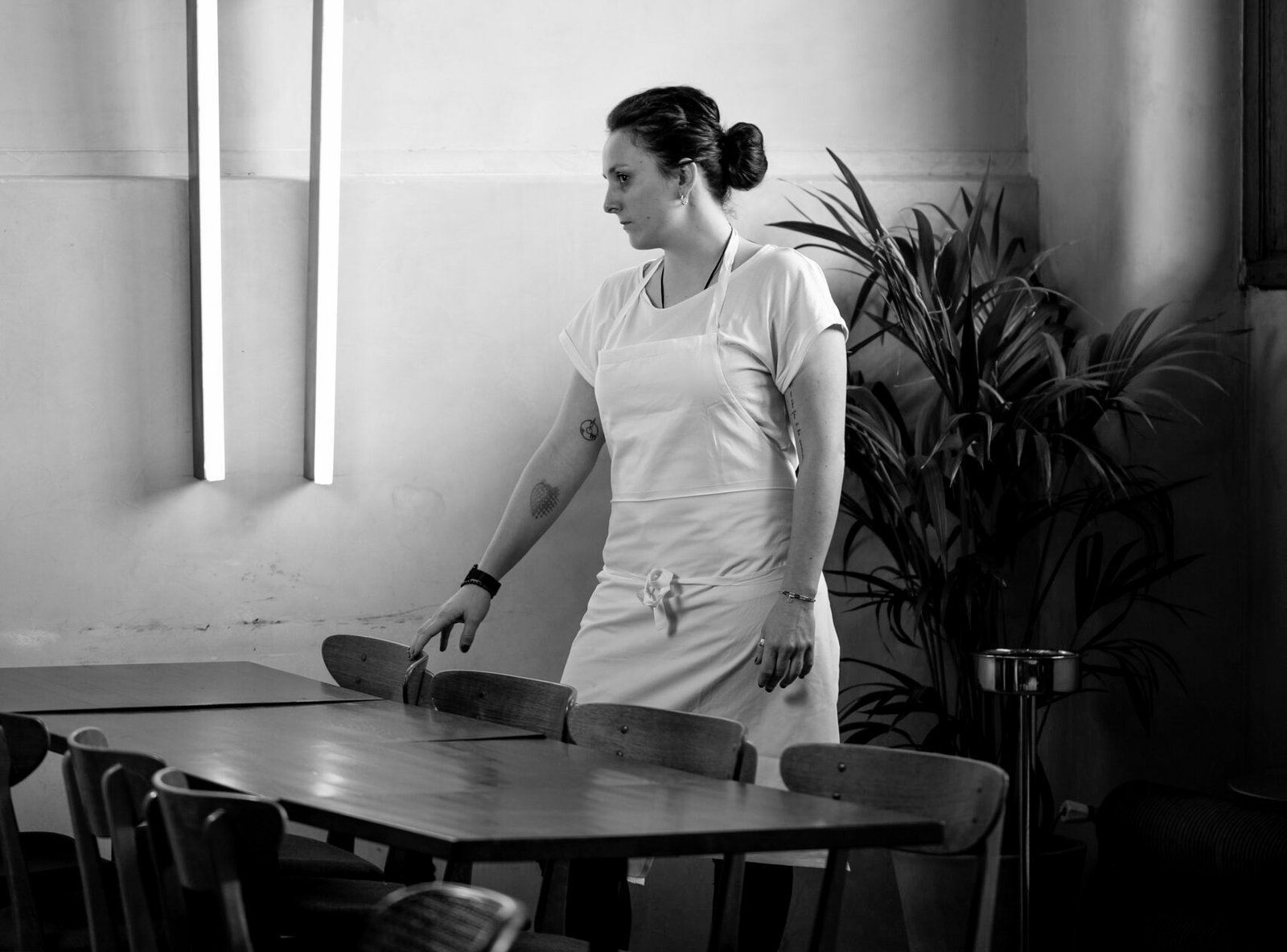
Fanny Herpin
France
My connection to food began in my childhood in Bordeaux, where I spent hours in the kitchen with my grandmother, Jacqueline. One of my fondest memories is making Mirabelle plum tarts. We’d pick the fruit in the orchard, and she’d carefully craft the pastry, arranging the plums precisely. Those moments taught me to honor ingredients, respect the seasons, and embrace the joy of cooking.
Starting an internship at Vieux Logis at age 15 changed everything for me and opened doors to culinary experiences I never imagined. After earning a Baccalauréat ES and a BTS in hotel and catering management, I began my career at 21 as a commis at Alain Ducasse’s Biblos in Saint-Tropez. I entered Ducasse’s demanding world from there, working at iconic restaurants like Jules Verne in Paris, Meurice, Benoit, and even New York.
At 26, I had the honor of becoming head chef at Chez Allard, an emblematic Parisian bistro. It was a milestone in my career and a role that solidified my values as a chef: rigor, respect for ingredients, and the importance of teamwork. These experiences have shaped my vision of responsible, generous cooking inspired by the seasons and the stories behind every ingredient.
One of my most unforgettable career moments was cooking for the Paris 2024 Olympic Games at the Stade de France. I was privileged to prepare dishes for the event for several days, including my hay-smoked seabream with watermelon jelly, beef heart tomatoes, and a lemon emulsion. Walking the track and witnessing the world’s greatest athletes was a surreal experience.
I want to see the industry shift towards better cooking practices in the mass market. Quality is often sacrificed for quantity, prioritizing standardized products over authentic, seasonal ingredients. Emphasizing local and environmentally friendly approaches could transform the industry and reconnect consumers with authentic flavors and quality products.
If I owned a restaurant, it would reflect my values—rooted in local, seasonal produce and collaboration with passionate artisans. Every dish would tell a story, offering an authentic and personal experience rather than following trends or external expectations.
Taxco’s Sacred Bug is Boosting Local Economy
Humans Of The Kitchen
From a Gordita Stand to a Whole Town, Jumiles Season is thriving.
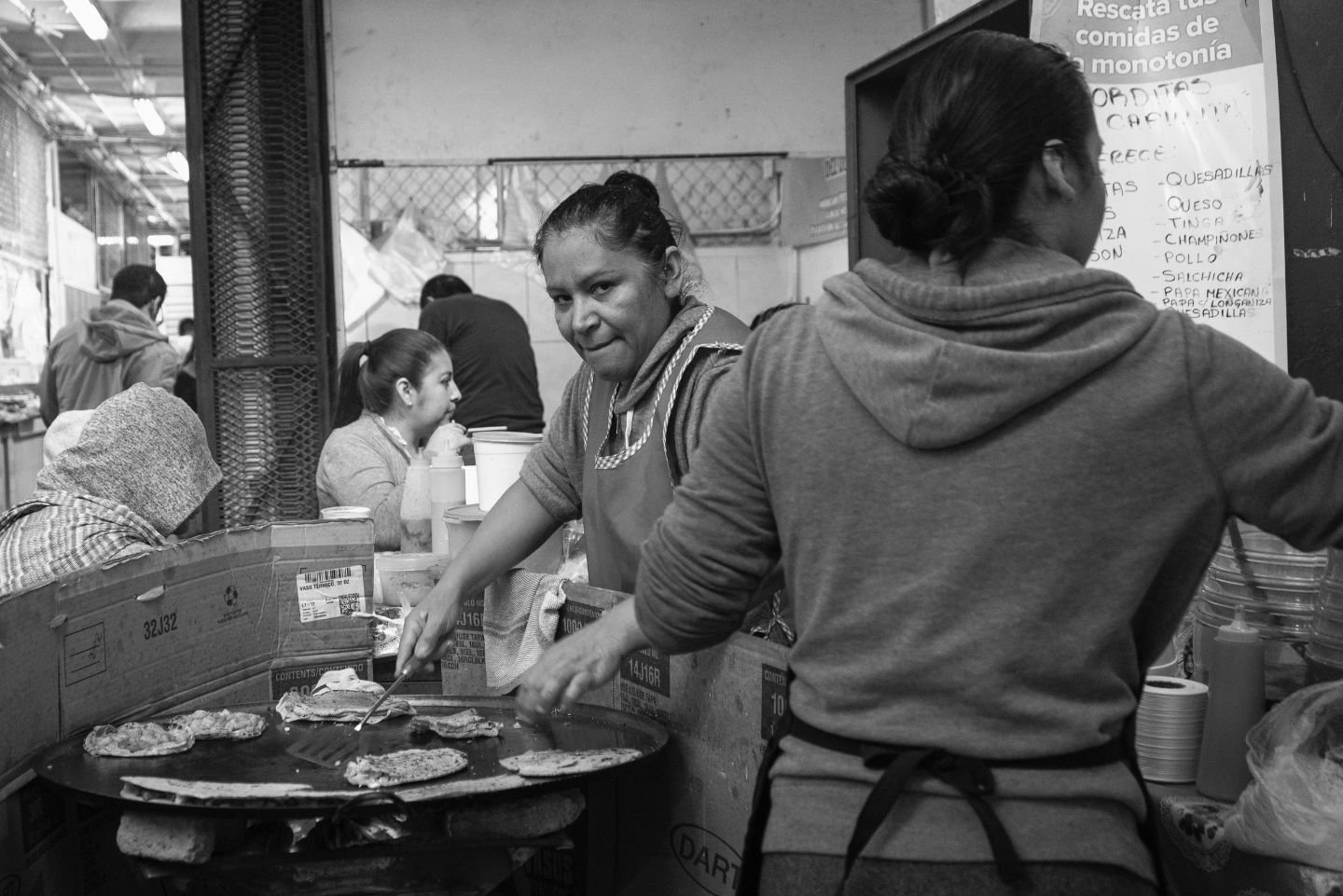
Jesenia & Guadalupe
Mercado Tetitlán - Mercado de Taxco, Mexico
In the lively Mercado Tetitlan of Taxco, Mexico, a culinary treasure quietly awaits those who seek to experience a truly unique taste of Guerrero. At the stall Gorditas la Capilla, run by mother-daughter duo Jesenia and Guadalupe, visitors don’t just come for the gorditas—they come for the jumiles, small mountain insects that have been a staple of local cuisine for centuries.
Situated next to a small chapel in the market, Gorditas la Capilla has become a must-visit spot for those looking to try these revered insects, which are in season from October to January. While the gorditas themselves are delicious, it is the salsa verde made with crunchy fried and ground jumiles that draws people from all over. The insects’ distinct, earthy flavor with hints of mint and cinnamon pairs perfectly with the gorditas, creating a one-of-a-kind dish that has locals and tourists alike returning year after year.
“The jumiles are the real star here,” Jesenia explains with a smile. “People come specifically to try them, and the gorditas are just the perfect vessel to experience them.”
Jumiles are not just a delicacy; they are a part of the cultural fabric of Guerrero. For generations, the Nahua people and other indigenous communities have harvested these insects, which are considered a sacred gift from the earth. In Taxco, the arrival of the jumiles is celebrated, with many believing that they are the spirits of deceased relatives returning for a visit. This belief adds a deep layer of reverence to the meal, transforming it from a simple dish into a meaningful cultural experience.
“First, it was only the local people from Mexico coming from other towns, but lately, I have seen a spike in international tourists curious about our culture, and that is rewarding to experience. It’s been 16 years since we started this stand, and 3 years ago we moved to the market. It’s just different to be in a market where you feel the community and can buy fresh ingredients right at the stands, rather than being far from it and serving from the streets. The jumiles are a big part of this experience, and having them so accessible in the market makes a world of difference,” Jesenia says.
“Eating jumiles connects us to the land and to our ancestors,” Guadalupe adds. “It’s more than food—it’s a tradition we honor every year.”
The jumil’s significance goes beyond the local level. In fact, the insect has its own festival and even a national day dedicated to it, celebrating its cultural importance and health benefits. With high iodine content, jumiles are said to offer numerous health benefits, making them a valuable source of nutrition in the region. They also carry a distinct, earthy flavor that lingers long after the meal, creating an unforgettable experience for anyone who tries them.
While many might find the idea of eating insects unusual, in Mexico, entomophagy has been a practice for centuries, with jumiles being a beloved part of the country’s food culture. For Jesenia and Guadalupe, preparing these insects with care and respect is a way of keeping a vital piece of their heritage alive.
Their gorditas, stuffed with a variety of fillings and topped with the rich, spicy salsa verde, offer the perfect texture balance. The pairing of the salsa made with jumiles is a perfect homage to Guerrero’s history, creating a dish that’s as much about the culture as it is about the flavor.
It is not just Jesenia and Guadalupe who continue to serve up their delicious gorditas with jumiles to an ever-growing crowd, but a whole town that is embracing the ingredient! They’re not just feeding their customers—they’re sharing a story, a tradition, and a taste of Guerrero that’s unlike anything else.
A Path Beyond Restaurants
Humans Of The Kitchen
From Front-of-House to Hybrid Culinary Concepts

Lana Lagomarsini
NYC Harlem
Raised in New York City, I became obsessed with the food world during college, working in front of the house and writing about recipes in my spare time. One day, a friend who was a line cook challenged me to fill a recently vacated position in his kitchen. He asked, “Do you want to put your money where your mouth is?” I couldn’t resist. The next day, I started as a Garde Manger cook at a small café in Boston. That was when my career began, and I haven’t looked back.
I worked front- and back-of-house jobs for years, gaining a deep understanding of the industry. Twelve years later, I’ve carved out a path that feels true. One pivotal moment came when I watched the chef at work describing the process of making consommé to a sous chef. I was captivated but couldn’t fully envision what he was explaining. That’s when I knew I needed a formal culinary education. The culinary school helped refine my skills and gave me the foundation to grow.
During the pandemic, I started my catering and private chef business, which eventually led me to explore pop-up dining and roaming concepts. Pop-ups allowed me to showcase my culinary story through tasting menus inspired by the restaurants where I honed my craft. They also gave me the freedom to experiment and find my style.
While I dream of having my own space one day, it won’t be a traditional brick-and-mortar restaurant. I imagine a hybrid concept, something flexible and reflective of my journey.
The kitchen has taught me lessons I carry into everyday life: confidence, the ability to handle challenges, and the importance of creativity. It’s also taught me how to navigate conflict and continuously push myself. These skills have been invaluable, both in and out of the kitchen.
Looking ahead, I hope the industry becomes more accessible to small businesses. The financial barriers to owning a space can feel overwhelming, so pop-ups have been my lifeline. I’d love to see more resources and affordable options for small business owners to thrive. The industry has so much potential to evolve, and I’m excited to be part of that change.
Story in collaboration with
Rejecting Law For The Kitchen
Humans Of The Kitchen
A Journey From Dishwasher To Chef In Copenhagen

Vuk Miljanovic
Copenhagen, Denmark
I never planned to work in the kitchen. It all started by accident. I was studying to be a lawyer, but money was tight, so I applied for a waiter job. They didn’t need waiters, only dishwashers, so I thought, “Why not?” and took the job. I can’t explain why, but something about being in the kitchen pulled me in. Slowly, I fell in love with the rhythm and energy and eventually became obsessed, in a good way.
The beginning was rough. I walked into a professional kitchen with zero experience and no idea what I was doing. The stress was overwhelming, and the yelling didn’t help. But once I got past that, everything changed. It became pure enjoyment. I even started to love the chaos of 15-16-hour shifts with all the hustle and madness.
One moment that stands out is when I joined Chef Nikola Nikolic’s kitchen at a high-end bistro in Belgrade. I was inexperienced, his team was tough, and Nikola had a temper. It was the most challenging job I’d ever taken on. But instead of breaking me, it lit a fire. I told myself, “You’re not going to break me. I’m going to be the best one day.” That drive has stayed with me ever since.
Six years later, I’ve worked in incredible kitchens, including @restaurant_aure and @restaurantjordnaer in Copenhagen. I now split my time working at Restaurant Aure and The Isolano. Each step of this journey has taught me resilience, passion, and the importance of pushing myself beyond limits I never thought possible. I’ve learned that this profession isn’t for everyone, but for those who thrive in it, there’s a unique kind of magic.
Bringing It Home
Humans Of The Kitchen
How Travel and Tradition is Shaping Cali’s Culinary Revival
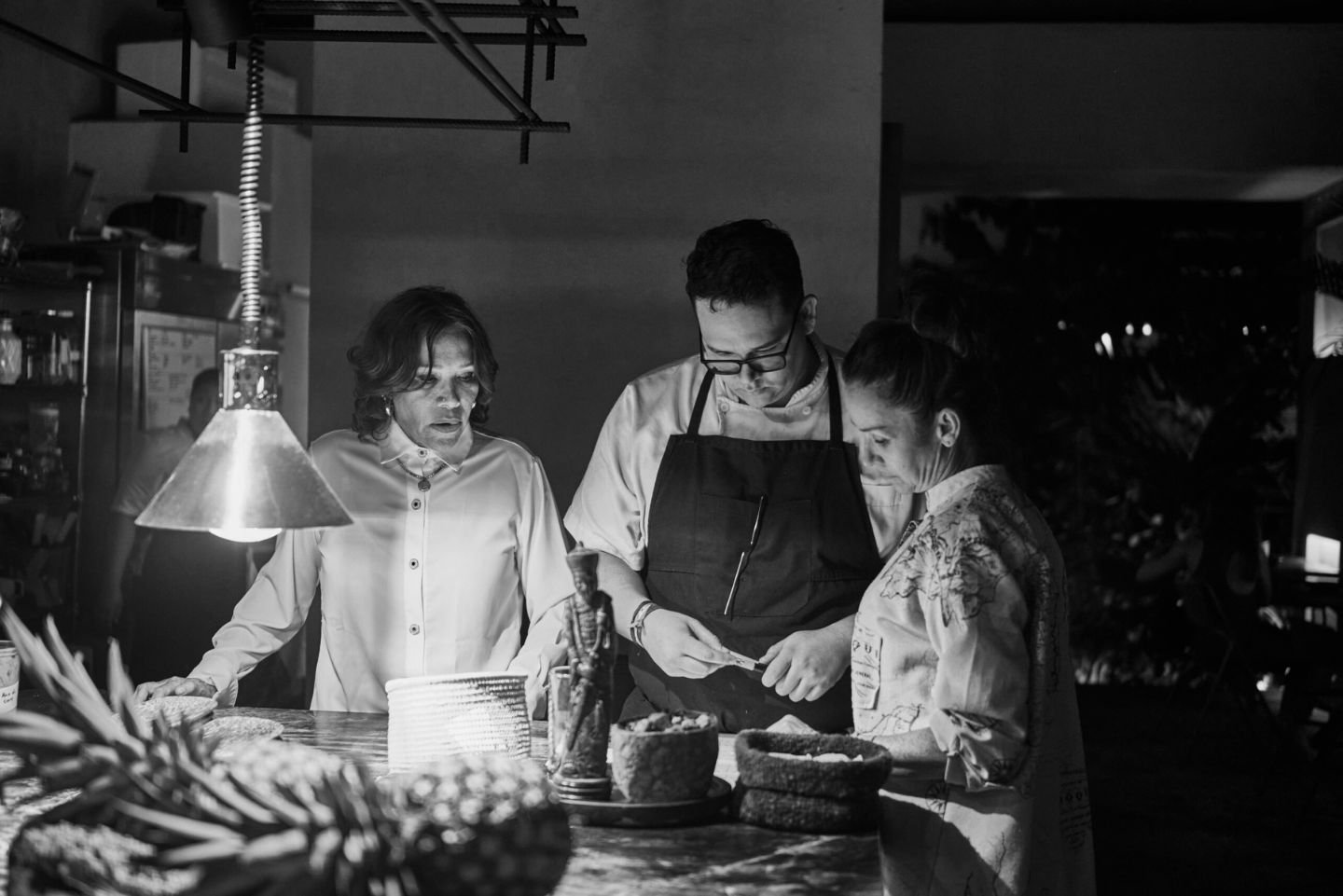
Luis Enrique Escobar Castaño
Cali, Colombia
I come from Cali, Colombia, and my love for cooking developed from the strong bond I shared with my parents, especially my father. He used to travel the world and bring back unique products and foods, which sparked my interest in learning to cook from a young age. Little by little, I developed a passion for exploring different cuisines and cultures through travel. When I was 11, my father arranged for me to spend part of my vacations at a friend’s hotel called Hotel Estrella in Palmira, where I worked in the kitchen and learned the art of cooking.
After graduating from high school at 15, which is relatively young for graduates in Colombia, I pursued my desire to leave the country by going to Buenos Aires to study cooking. Learning from the best at a young age and being far away from my family and friends helped me grow professionally. Despite feeling overwhelmed and lonely at times, I am grateful to the people in Buenos Aires for welcoming me and thankful to my mentor, Pedro Barreto. My love for travel led me to work at @rest_quintonil in Mexico, then @leorestaurantcol in Bogotá, and @ik_restaurante in Peru, amongst other places. These experiences fueled my creativity and passion for continual learning and innovation.
After spending a few years abroad, I decided to return to Colombia to reconnect with my roots. While working in research at the International Center for Tropical Agriculture, I also pursued studies in Nutrition and graduated at the beginning of 2024. Currently, I work as the head chef at @domingorestauranteco in the city of Cali and also as a teacher at Javeriana.
My greatest wish is for Cali to reclaim its status as a gastronomic capital and to be once again recognized as one of the premier culinary destinations. With its rich biodiversity, Colombia is home to diverse marine and land ecosystems, but industrialization has significantly impacted our traditional diet and culinary practices. More importantly, I believe that Cali, with its abundant potential and rich cultural heritage, deserves the recognition it merits.
From Okinawa to Overtown
Humans Of The Kitchen
How a Caribbean Pop-Up in Japan Sparked an Urban Farming Movement in Miami
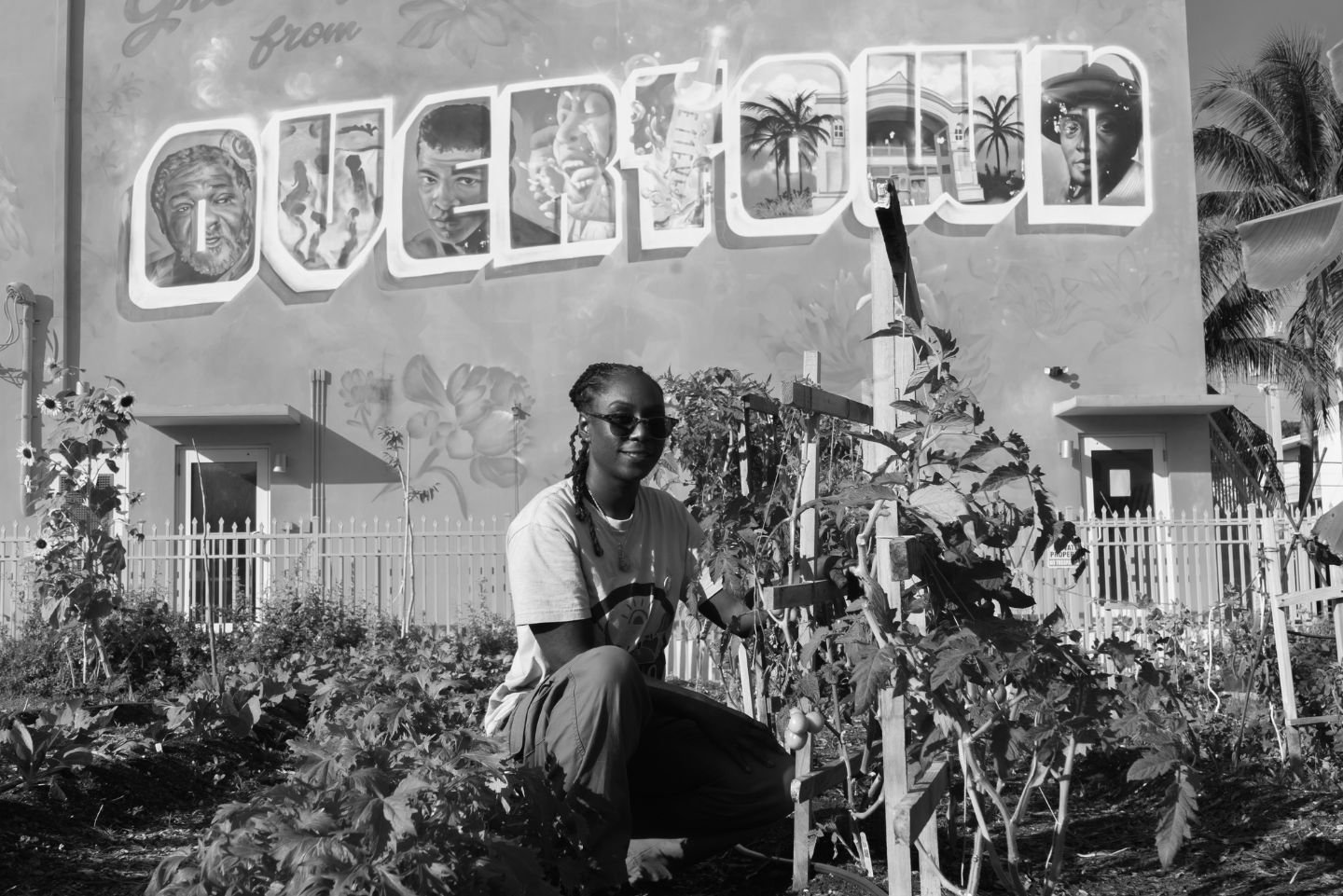
Chrys Salmon
Miami, FL
I never set out to be a chef. Growing up, I spent countless hours in my grandmother’s kitchen, absorbing the aromas of curry and oxtail simmering on the stove. It was there, surrounded by food, that the seed for my culinary journey was unknowingly planted..
It all began in the most unexpected place: Okinawa, Japan. At the time, I was serving in the military on an island where Jamaican culture was surprisingly embraced. Reggae music filled the air, and the locals were eager to explore Caribbean flavors. I had been hosting parties at home, cooking dishes that reminded me of my Jamaican roots, when I decided to take a chance.
I started doing pop-ups at a small restaurant owned by a Japanese friend, and they loved it so much that they sponsored the entire venture. This led to the opening of my first restaurant in Japan, a Caribbean spot where we offered authentic Jamaican dishes like curry, oxtail, and plantains. It was surreal to see my culinary passion come to life in a country half a world away from Jamaica.
Breaking Boundaries Without Knowing It
I had no culinary school training. I was just a young woman in the military who loved to cook. But the universe placed me in rooms with legends — Roy Yamaguchi, Chef Morimoto — giants in the culinary world. I didn’t even know who they were. To me, they were just people who loved food as much as I did. We were equals, connected by the art of cooking.
Looking back, my ignorance was a blessing. It kept me humble, kept me hungry to learn. Yoshitake, my Japanese mentor, guided me through the chaotic world of restaurant ownership, teaching me the discipline and respect that Japanese chefs are known for. I was balancing 24-hour military shifts with running a bustling restaurant, learning on the go. It was madness, but it was magic.
From Japan to Hawaii: Reinventing Dreams
After Japan, I moved to Hawaii. It felt like coming full circle — another island, another chapter. I enrolled at the Culinary Institute of the Pacific, finally formalizing what I had been doing by instinct. I opened a food truck, thinking I’d bring a piece of the Caribbean to the Pacific. It was my dream on wheels, my heart in a 1987 step wagon that I had gutted and rebuilt with my own hands.
Then COVID hit. Hawaii shut down, and my food truck, my dream, collapsed. But I wasn’t ready to let go. I packed it up, paid $18,000 to ship it to Las Vegas, determined to keep going. But Vegas was cold — literally and metaphorically. My food truck couldn’t survive the winter. I couldn’t survive the winter.
I moved to Miami, bringing my food and my vision with me.
Rooted in Soil and Community
While working at Rosie’s alongside Chef Akino, I had a vision of linking the restaurant to an organic garden. Despite the idea being embraced, it never fully took root, leaving me unfulfilled. Realizing I needed to pursue this dream on my own, I decided to take a leap of faith.
That’s when a friend of mine introduced me to Dr. Marvin Dunn, a dedicated advocate for building community gardens throughout Miami. It felt like fate; everything clicked. I was ready to turn that vision into something real and meaningful.
The People’s Garden
We don’t have gates here. No fences. This land belongs to no one. It belongs to everyone. I don’t get mad when people take food, even when they pick it green. That’s what it’s here for. We grow culturally relevant crops — breadfruit, plantains, Kunti — food that reflects the community.
We host farmer’s markets, pop-up dinners, and communal meals, because food is meant to be shared. It’s meant to bring people together. And it does, every day.
Rooted in Nature
Humans Of The Kitchen
A Journey of Connection That Challenges the Rigid Mold of Fine Dining!
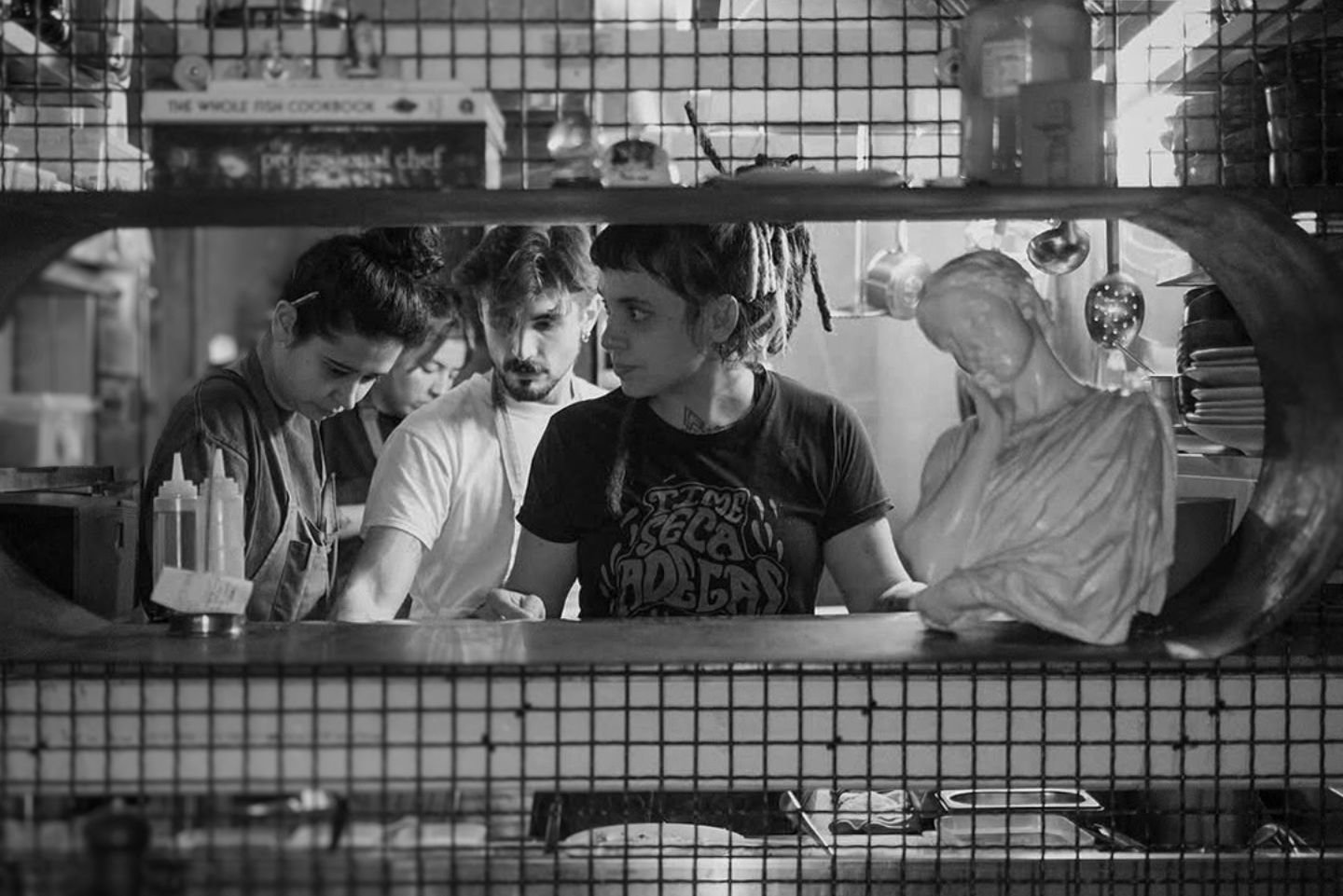
Ana Leão
Food has always been about connection for me. It started with my grandmother at her country house in Portugal, where I am from. I’ve been cooking for almost twenty years and remember beginning my journey as an apprentice in fine-dining restaurants. It didn’t take long to realize that wasn’t the right path. The rigid formality and the pressure to follow a specific mold didn’t feel like me. I wanted something different, something more connected.
Much of my career was spent traveling and working across Australia, splitting my time between restaurants and farms. Those years were transformative. I wanted to understand food’s roots and see where it came from before reaching the plate.
Today, I’m the head chef at Babel, a small restaurant in Porto that feels closer to where I’ve always dreamed of working. At Babel, the goal is to make every customer feel like they’re at a friend’s house. Everything is casual and unpretentious, but the food has to be excellent. We change the menu specials almost weekly, keeping things exciting for the team and our guests. There’s a joy in that constant creativity, and it’s the happiest I’ve been in my career.
The industry, though, has its challenges. Schedules are grueling, and paychecks often don’t reflect the efforts of the industry. If there’s one thing I’d like to see change, it’s how teams are treated. Better working conditions and more respect for the people behind the food matter. They’re what I strive for every day at Babel.
From Weekend Server to Culinary Command
Humans Of The Kitchen
Banquet Chef to Master Chef and Owner: A Journey of Precision, Leadership, and Growth.

Keith Hernandez
At 16, I took on weekend shifts as a server at Lido Beach Club. In the kitchen, the air was thick with the scent of garlic and grilling meats, and the rhythm of clattering pots alongside the crackling of the fryer formed a soundtrack that resonated deeply within me.
I soon transitioned into the kitchen. The organized chaos, the pressure, and the excitement of cooking for large groups intrigued me. While many chefs gravitate toward the fast pace of restaurants, I found my passion in mass production—creating meals for 500, 1,000, or more people at a time. That’s where I knew I wanted to focus my career.
After graduating from culinary school, I started my career at Sodexo, managing corporate lunches for hundreds of people daily at the Pfizer building. Later, I moved to the hotel industry and gained experience at places like the Gramercy Park Hotel, where I cooked for celebrities in a rooftop kitchen. I began working with higher-quality ingredients and refining my culinary skills. My significant career advancement came when I became the Banquet Chef at the Marriott Marquis, where I cooked for 1,000-2,000 people daily. This experience made me feel like I had truly entered the “big leagues.” Only a few chefs can say they’ve handled those numbers with precision every day. It was a test of skill and leadership, and I was honored with awards such as Manager of the Year and Big Apple Nominee. I also competed and won in the Masters of the Craft competition, representing the Marriott brand.
I have worked in luxury hotels, Kosher catering, and high-end venues like Public Hotels under Chef Diego Muñoz. Currently, I serve as the Executive Chef at Resorts World Casino, overseeing multiple outlets, banquets, and my restaurant, @Rwprime_nyc, which has been an enormous success. Through my experiences and hard work, I have gained the confidence to handle events of any scale, shaping me into the chef I am today. I am dedicated to striving for a better quality of life for chefs and cooks. Building a solid team with comprehensive knowledge of the kitchen can provide support during days off, and reducing work hours to a more reasonable level would allow us to spend more time with our family and friends.


